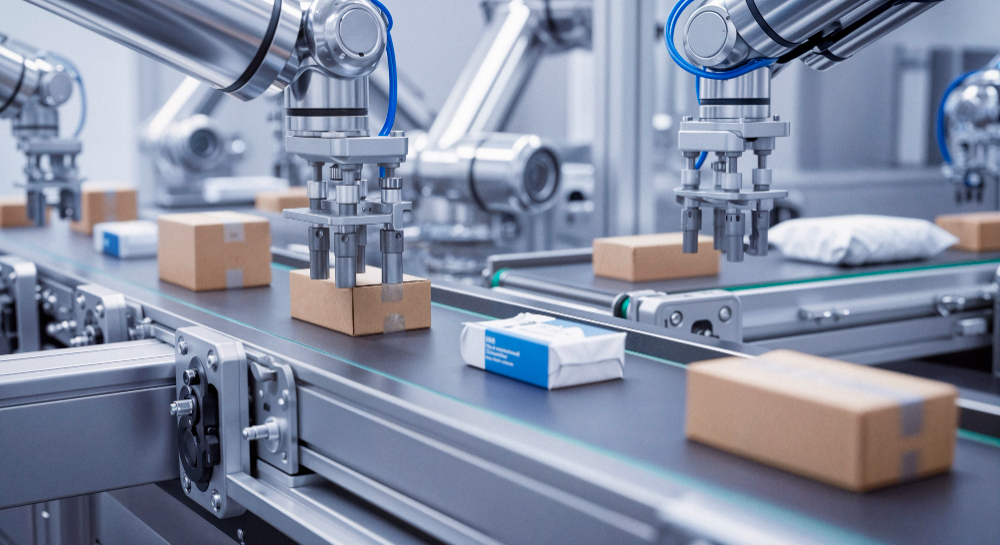In the ever-evolving healthcare industry, managing costs while ensuring high-quality care is a constant challenge. With rising expenses and the need for efficiency, many healthcare systems are turning to innovative solutions to streamline operations. One of the most impactful advancements is the implementation of automated supply chain visibility, which has helped numerous hospitals reduce costs and improve their bottom line. In this article, we’ll explore how a leading healthcare system is leveraging automation to manage its supply chain more effectively.
The Rising Need for Cost Management in Healthcare
Healthcare providers face mounting financial pressures from a variety of sources. Rising medical supply costs, labor shortages, and the need to stay compliant with increasingly stringent regulations are just a few challenges. In response, hospitals and healthcare systems are exploring every avenue to reduce unnecessary expenditures without compromising patient care.
One of the areas that has proven ripe for cost-saving innovations is supply chain management. Traditionally, healthcare supply chains have been fragmented and inefficient, with manual processes often leading to waste, stockouts, and excess inventory. However, the adoption of technologies like hospital inventory automation has transformed the way hospitals track, manage, and distribute their supplies.
With automated supply chain visibility, healthcare systems can monitor every aspect of their inventory in real time, from procurement to delivery. This not only enhances accuracy but also ensures that hospitals are only ordering what they need, thereby reducing both overstock and stockout scenarios.
How Automation Helps Reduce Costs
1. Real-Time Tracking and Improved Efficiency
Automated systems allow healthcare organizations to track their inventory in real time, eliminating the guesswork and delays associated with manual inventory checks. By integrating RFID tags, barcode scanning, and IoT sensors, hospitals can monitor supplies as they move throughout the system, making it easier to forecast needs and adjust inventory levels accordingly. This level of visibility reduces the risk of overstocking, which can tie up valuable capital, and minimizes the likelihood of stockouts that could disrupt patient care.
2. Streamlined Ordering Processes
In addition to real-time tracking, hospital inventory automation simplifies the ordering process. Automated systems can automatically generate purchase orders when stock levels fall below a certain threshold, ensuring that supplies are always available when needed without the need for manual intervention. This reduces the administrative burden on staff and allows hospitals to focus on providing care rather than managing logistics.
3. Data-Driven Decision Making
Automation provides hospitals with a wealth of data that can be used to make more informed decisions. By analyzing trends in supply usage, hospitals can identify patterns that might otherwise go unnoticed. For example, if certain items are consistently overstocked or underused, adjustments can be made to better align inventory with actual demand. This data-driven approach helps to reduce waste and improve financial outcomes.
4. Enhanced Supplier Relationships
Automated systems also improve communication between hospitals and their suppliers. With automated ordering and tracking, hospitals can provide suppliers with more accurate forecasts, ensuring timely deliveries and reducing delays. This enhanced communication strengthens supplier relationships and can lead to better pricing agreements, further contributing to cost savings.
The Role of Technology in the Future of Healthcare Supply Chains
The future of healthcare supply chains is closely tied to technological innovations. Solutions are helping healthcare organizations take full advantage of automation by providing end-to-end visibility throughout the delivery process. These platforms integrate with existing hospital systems, offering real-time updates and tracking capabilities that ensure every delivery is on time and meets regulatory standards.
Healthcare systems can streamline their operations, reduce administrative costs, and improve their supply chain’s overall efficiency. This level of visibility is critical in an industry where both time and resources are of the essence.
Conclusion
Automated supply chain visibility is proving to be a game-changer for healthcare systems striving to cut costs without compromising care. Through hospital inventory automation, real-time tracking, data-driven decision-making, and enhanced supplier relationships, healthcare organizations are making significant strides in reducing inefficiencies. By adopting advanced technologies and platforms like PackageX, hospitals can ensure that they are not only saving money but also improving patient care and overall operational performance.






